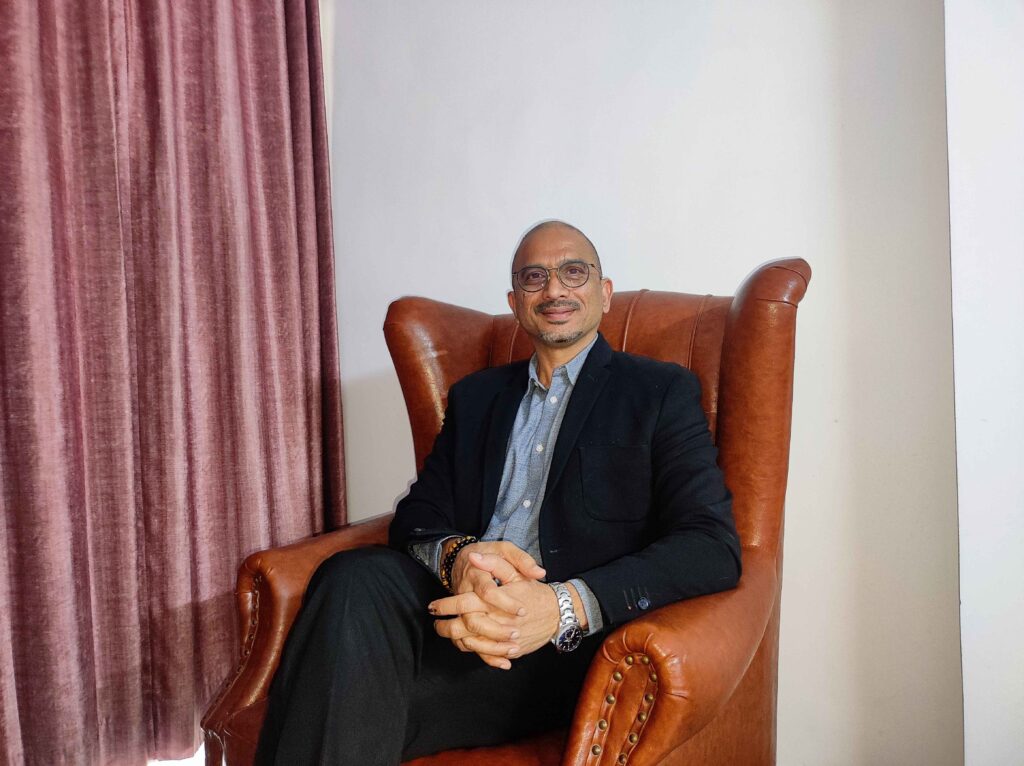
Christopher Blessing, MD, Corporate Aesthetic Refurbishing Enterprises Pvt Ltd (Caere) gives his views on Automation, AI and Skilled Manpower that will impact decision making and contract closures in 2024.
Skilled manpower comes at a cost. What are the changes you foresee in future contracts with revised cost and a complete understanding of the principal employer?
As skilled labour costs rise, there’s a push towards balancing this with strategic use of automation, such as selective cleaning machines. However, in service areas requiring direct labour participation like security, gardening, landscaping and help desks, quality hinges on fair compensation. Skimping on wages might breach labour laws and harm both the service provider’s and the client’s reputations.
AI-driven cleaning solutions can work around the clock without the need for breaks, vacations, or shift changes, significantly increasing productivity. This efficiency translates directly into cost savings
Christopher Blessing
Will headcount based services exit from contracts henceforth?
Headcount-based services, particularly in areas like security, gardening and help desks, are unlikely to be fully replaced by automation. These services often require human judgment, empathy and the ability to respond to unpredictable situations—qualities that automation cannot replicate. For example, security personnel need to make quick decisions in emergency situations, gardeners apply expertise in plant care that varies with the environment and help desk staff offer personalized customer service. In these instances, automation might assist but cannot fully take over the human aspect, ensuring these roles remain essential despite technological advancements.
No doubt, AI is a new fascination across segments. Is the Indian cleaning horizon prepared for such investments?
While there are challenges to overcome, there is also significant potential for AI to revolutionize the Indian cleaning industry, from robotic cleaning devices to AI-driven management systems for efficiency and sustainability. The key to harnessing this potential will be a coordinated effort involving infrastructure development, training and education, regulatory support and fostering a culture of innovation.
How would you explain the cost saving aspect in such contracts? What would be your convincing USP?
Explaining the cost-saving aspect in contracts involving AI or technology-driven solutions, particularly in sectors like the Indian cleaning industry, requires a focus on how these innovations lead to efficiency, productivity improvements and long-term savings.

Unique Selling Proposition (USP) for Cost Saving through AI in Cleaning Contracts
Increased Efficiency and Productivity: AI-driven cleaning solutions can work around the clock without the need for breaks, vacations, or shift changes, significantly increasing productivity. This efficiency translates directly into cost savings, as tasks are completed faster and with fewer human resources.
Precision and Reduced Waste: AI technologies, including smart sensors and robotics, can achieve a level of precision in cleaning that minimizes the use of cleaning agents and water, reducing waste and operational costs. By targeting specific areas needing cleaning and maintaining optimal levels of hygiene, resources are used more efficiently.
Predictive Maintenance: AI systems can predict when equipment is likely to fail or when maintenance is needed, preventing costly breakdowns and extending the lifespan of cleaning equipment. This predictive approach saves money on emergency repairs and replacements.
Reduced Human Error: By automating routine or complex tasks, AI reduces the chances of human error, which can lead to additional costs from damage, rework, or accidents. This not only saves money but also ensures a consistently high quality of cleaning.
Data-Driven Decision Making: AI can collect and analyze data on cleaning processes, offering insights into areas where resources are being overused or underutilized. This data-driven approach allows for informed decisions that can lead to significant cost reductions over time.
Automation has already caught up in the service industry but has the cleaning equipment industry stood up to the demands for customised automation? What are the challenges in this space?
Customized automation in the cleaning equipment industry involves developing solutions that can adapt to specific requirements of different spaces, such as commercial buildings, healthcare facilities, educational institutions and industrial sites. This includes robotic cleaners that can navigate complex spaces, smart systems that adjust cleaning intensity based on the area’s dirtiness and equipment that can handle multiple types of surfaces or cleaning agents.
Challenges:
Customized solutions are often more expensive than standard equipment, both in development and purchase price, which can be a barrier for some customers. As cleaning equipment becomes more sophisticated, ensuring reliability and easy maintenance becomes crucial. Downtime or complex maintenance procedures can negate the benefits of automation.
By adopting and showcasing the effectiveness of customized automated cleaning technologies, Caere can serve as a model for the industry, demonstrating the practical benefits and ROI of such investments.






